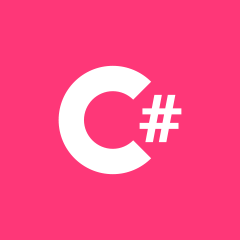如何使用 HttpClient 处理数据提供者实例?
我已经使用存储库模式创建了我的数据提供程序。
首先,我设计了一个基础存储库接口,如下所示:
internal interface IGenericRepository<T, in TResourceIdentifier>
{
Task<IEnumerable<T>> GetManyAsync();
Task<T> GetAsync(TResourceIdentifier id);
Task PutAsync(T model);
Task<T> PostAsync(T model);
Task DeleteAsync(TResourceIdentifier id);
}
然后我实现了它:
public class GenericRepository<T, TResourceIdentifier> : IDisposable, IGenericRepository<T, TResourceIdentifier>
where T : class
{
private bool _disposed;
protected HttpClientHelper<T, TResourceIdentifier> Client;
protected GenericRepository(string addressSuffix)
{
Client = new HttpClientHelper<T, TResourceIdentifier>(Properties.Settings.Url, addressSuffix);
}
public async Task<IEnumerable<T>> GetManyAsync()
{
return await Client.GetManyAsync();
}
// All other CRUD methods and dispose
public void Dispose()
{
Dispose(true);
GC.SuppressFinalize(this);
}
private void Dispose(bool disposing)
{
if(_disposed || !disposing) return;
if(Client != null)
{
var mc = Client;
Client = null;
mc.Dispose();
}
_disposed = true;
}
}
然后我为每个实体创建了自定义存储库接口。例如:
internal interface IOrderRepository : IGenericRepository<Order, int>
{
Task<IEnumerable<Order>> GetOrderBySomeConditionAsync(string condition );
}
最后,我实现了自定义存储库:
public class OrderRepository : GenericRepository<Order, int>, IOrderRepository
{
public OrderRepository(string addressSuffix) : base(addressSuffix)
{
}
public async Task<IEnumerable<Order>> GetOrderBySomeConditionAsync(string condition)
{
//get all the orders (GetManyAsync()) and then returns the ones meeting the condition
}
}
请注意,HttpClientHelper使用HttpClient,需要手动处置。
我创建了一个 MVC Web 应用程序,并在类级别定义了存储库,如下所示:
IOrderRepository _orderRepository = new OrderRepository();
这会影响 Dispose,但却是反模式。
我在实现中缺少什么,即每次调用时都没有释放该实例?
 ITMISS
ITMISS2回答
-

慕莱坞森
您不应该在每次请求后都处理 HTTPClient。因此,HttpClient旨在实例化一次并重用 在应用程序的整个生命周期中。实例化 HttpClient 每个请求的类都会耗尽可用套接字的数量 在重负载下。该问题将导致 SocketException 错误。 解决该问题的可能方法基于创建 HttpClient 对象作为单例或静态,如此处所述 Microsoft 关于 HttpClient 使用的文章。 -

跃然一笑
在通用存储库中编写 Dispose 方法并不意味着它会在您认为需要时自动调用。它旨在单独调用,因此您必须使用using语句(就像您有所示),或代码中的 Dispose 方法。或者,您可以将该工作留给垃圾收集器。如果您确信使用,您还应该在通用存储库中创建一个终结器GC.SuppressFinalize(this);您还应该创建一个静态类来保存 HttpClient。您必须使用 HttpResponseMessages 来满足您的需求,或者 HttpContent。
 随时随地看视频慕课网APP
随时随地看视频慕课网APP
相关分类


 C#
C#